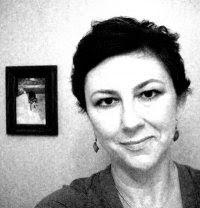Please note: Images References: Drawing the Human Head, Burne Hogarth; Drawing from Life, Brown and McClean; The Artist’s Complete Guide to Drawing the Head, William L. Maughan. These images are used for educational purposes only.
Beginning exercises:
Hints on lighting the model: Position a single light in front of the model, slightly to one side and slightly above the model. This is the best position to display the planes of the face, and enhance the three-dimensionality of the form. Multiple lights and full frontal lights will flatten the form, and lighting from below will create some exaggerated shadows.
The egg shape is simple, but an effective place to start with a full frontal drawing.
By dividing the head with a vertical axis and a horizontal axis at the mid-point each direction, you find the approximate location of the center of the face and the eyes.
Note the location of all the features from this simple division. More on this a little later.
Left: As the head rotates to one side, the curve central axis becomes visible.
Center: Notice how the features rotate as the axis rotates.
Center: Notice how the features rotate as the axis rotates.
Right: As the head continues to rotate, the cranium becomes more visible.
 In these illustrations, notice how the features are aligned;
In these illustrations, notice how the features are aligned;The center of the eye aligns vertically with the corner of the mouth.
The ear sits between the brow bone and the end of the nose.
The inside corner of the eye aligns with the edge of the nostril
It’s also very important to think of the face as a series of planes that combine to create a three-dimensional form. It’s always best to work from life, but we all must use photos at times---this is when we really have to conceive of the head as a three dimensional form.
As the head shifts up and down, the curve of the horizontal axis is more visible, following the shape of the brow bone. Note how the chin mimics the curve of the brow bone.
Again, note the alignment of the eyes to the lips and nostril.
Again, note the alignment of the eyes to the lips and nostril.
Guidelines for the placement of features:
Note in Fig. A (left) that the face is divided into halves from the top of the skull to the bottom of the chin. The eyes are the midpoint. Note in Fig. B (right) that the features are divided into thirds; the hairline to the brow bone is one third. The brow bone to the base of the nose is another third. The base of the nose to the bottom of the chin is another third.
Further, the section from the bottom of the nose to the chin can be subdivided into thirds, with the lips located about one third of the way down.
Note in Fig. A (left) that the face is divided into halves from the top of the skull to the bottom of the chin. The eyes are the midpoint. Note in Fig. B (right) that the features are divided into thirds; the hairline to the brow bone is one third. The brow bone to the base of the nose is another third. The base of the nose to the bottom of the chin is another third.
Further, the section from the bottom of the nose to the chin can be subdivided into thirds, with the lips located about one third of the way down.
Note the location of the ears within the middle third of the features. Also, note the slope of the face in profile view; this may change greatly depending on the individual; there is no substitute for really looking at your model---remember, these are just guidelines.
Diagram of heads in perspective
I recommend you do a lot of these quick drawings so that the proportions of the head and the axis of the head become second nature to you. Do them quickly---only a few minutes at most. I like to do them in airports, resturants, the park, at lectures, etc.
Helpful hints: As with any drawing endeavor, work from the general to the specific. It’s a good idea to start with some gesture drawings to warm up, and once you’re ready to begin, start with the broad shapes and really looking at the subject. Guidelines are helpful, but attaining a likeness is about really looking, measuring and looking again. At some point, you leave the guide behind and trust your eye…
Remember the negative space in your drawing; it’s important to place the form in a space to enhance the three-dimensionality of the subject.
References: Drawing the Human Head, Burne Hogarth; Drawing from Life, Brown and McClean; The Artist’s Complete Guide to Drawing the Head, William L. Maughan








No comments:
Post a Comment